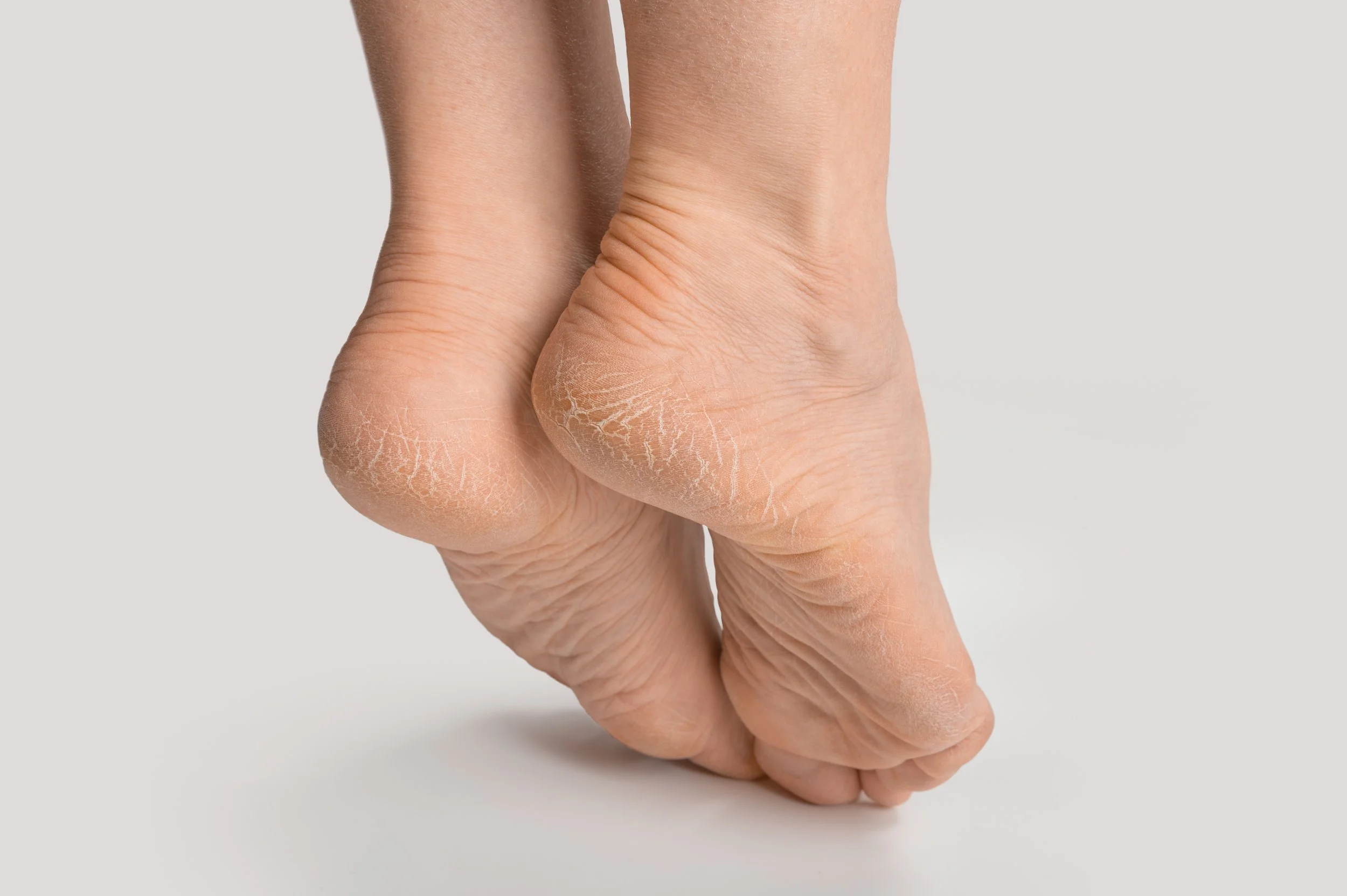My heels are cracking up!
Even though I'm a podiatrist, my heels always become terribly dry at this time of year and, without intervention, will start to crack up within the next few weeks.
I will take some time off over the Christmas break, meaning less time in supportive, closed-in shoes and more time barefoot at home or down the beach in thongs. That's when it starts to happen ….
“Did you know when the skin on your feet – particularly around the heel – becomes dry, it loses its suppleness and elasticity and is more prone to developing cracks and fissures?”
Dry, cracked heels can look unsightly and be annoying, catching on socks and bedsheets. But, more troublingly, if cracks become deep enough – known as "fissures" – they can become extremely painful and are prone to infection.
What causes dry & cracked heels?
There are several reasons why the skin on your heels can become dry and cracked:
Footwear (or a lack of footwear!)
In my case – over the summer months in South Australia – we tend to spend a lot of time barefoot or wearing open-backed footwear, such as thongs and sandals.
As well as exposing our heels to the harsh South Australian elements – which has a drying effect in a warm, dry climate – these types of shoes don't typically provide much cushioning under the foot, so there is increased pressure at the heel.
In addition, when wearing open-backed shoes (or going barefoot!), the fat pad around your heel expands more so than if you were wearing a supportive closed-in shoe. This increased pressure and expansion means that your heels are more prone to developing cracks and fissures when the skin is dry.
Increased Pressure at the Heel
As well as wearing unsupportive open-backed footwear, other factors can increase pressure at the heel, causing a build-up of hard, thickened skin (callus). These include:
being on your feet for long periods – particularly on hard floors,
lower limb biomechanical issues,
wearing high-heeled shoes, and/or
increased weight.
Medical Conditions & General Health
Some medical conditions – including tinea, eczema, psoriasis, diabetes, hypothyroidism and Sjögren's syndrome – can make you more prone to developing dry, cracked heels.
Vitamins, minerals, zinc and omega-3 fatty acids are critical in keeping skin healthy, moisturised and elastic. Dry, cracked heels can be a sign of a poor diet or vitamin deficiency.
Pregnancy also increases pressure through the feet and can lead to dry, thickened heels (just add this to the huge list of changes to your body during this time!)
Naturally dry or calloused skin around the heel can even be genetic in nature.
Aging
From middle age, your skin loses moisture quickly and becomes more susceptible to drying out.
And just as another added bonus for us females (yay!), following menopause, some of us are more prone to a skin condition called "Keratoderma climacterum", which results in a thickening of the skin on the soles of the feet (and hands).
Your Environment
Exposure to soaps, detergents, chemicals or even water can strip the skin of its natural oils, leaving your skin dry.
Spending regular time at the pool or beach during summer can take its toll on the appearance, feel, and health of your skin.
Chlorine, other pool chemicals, ocean salt – and even prolonged water exposure – all strip moisture from your skin.
In South Australia, dry heels are seen most commonly in the summer months. However, in much cooler climates - such as in the northern hemisphere - it is more common for people to get cracked heels in the extreme cold.
What can I do to treat my dry, cracked heels at home?
For most people, you can do treatments at home (just like me!) to resolve your dry heel problem. And you guessed it … it's regularly applying a moisturising cream to your heels.
When should I see a podiatrist?
Podiatrists are your foot care specialists, and we are here to provide support if your dry, cracked heel problems are persistent.
You should always see your podiatrist for dry, cracked heels if:
regular self-care at home does not improve the condition of your heels, or
you have diabetes or peripheral neuropathy, or
the fissures on your heels are painful and/or bleeding, or
you have any worries or concerns about your feet.
We will perform a full assessment of your feet to determine the underlying cause of your dry and cracked heels, and then we'll create a management plan to help you manage the issue.
“Podiatrists have the right tools to professionally and SAFELY remove hard skin from your heels.
We also have access to a wide range of heel creams to suit all types of feet.”
We will also recommend referral to an appropriate health professional if it is determined that a nutritional or other medical disorder is the underlying cause of your heel issue.
So there you have it!! Get summer heels like a pro. Enjoy the beach or the pool, but get home and moisturise those feet!
Please feel free to share this article with friends and family (particularly those with dry heels!)



